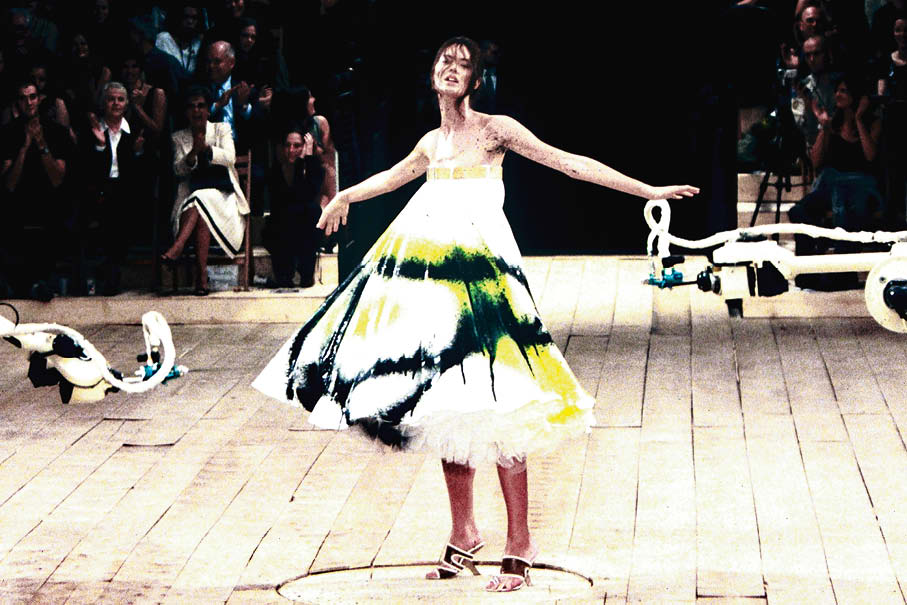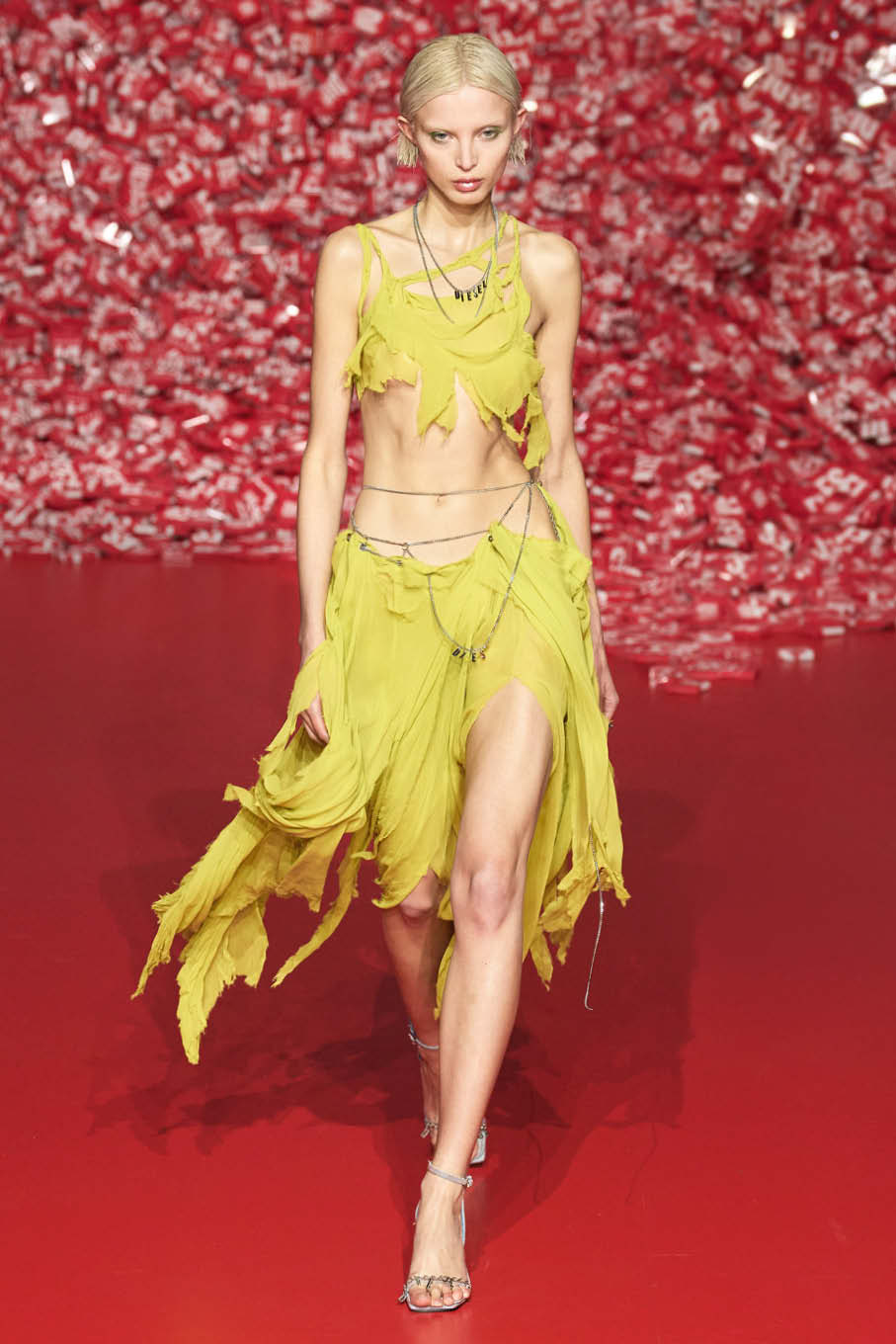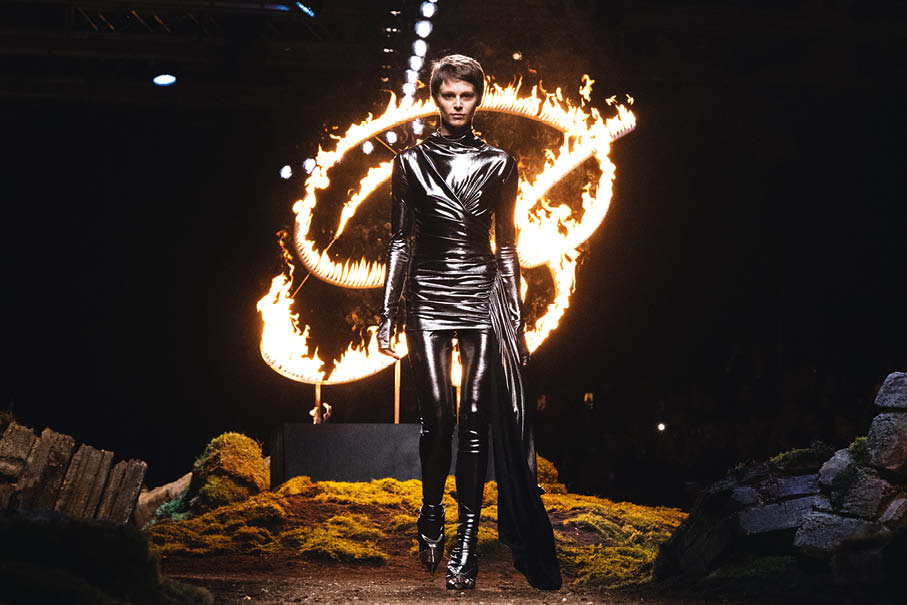There are certain scenarios that come to mind when one thinks of all things calm, cool and collected. Perhaps it is the soft patter of rainfall on a lazy Sunday morning, the resounding echo of a sound bowl at the end of a meditation or even a contemplative sigh as the sun sets. Even with all of life’s languished luxuries, however, the undercurrent and excitement of fashion never falls far behind.
Whether it comes in the form of a search for that perfect outfit to grace an occasion with, the size and fit of a long-awaited purchase or the painstaking orchestration of a good first impression, under the umbrella of this US$1.7 trillion business, no proclamation of separation or off-the-grid sensibility can truly help one escape it. But then again, what exactly is there to ‘escape’? The list, it seems, is endless. And in the world of apparel, escapism looks a lot like a loud and unforgettable statement.

Despite the recent upsurge of ‘quiet luxury’, the fashion industry’s propensity for all things controversial, risky and indulgent proudly anchors it. Madonna’s appearance on Jean Paul Gaultier’s runway in 1992 caused shockwaves with a chest-baring bustier. Alexander McQueen’s infamous autumn 1998 collection was a chilling nod to Joan of Arc, symbolised by an unrelenting ring of flames as a closing act. His spring/summer 1999 show, in equal vein, featured model Shalom Harlow being spray-painted by robots. At the designer’s spring/summer 2001 showcase, a set peppered with glass boxes and models in straitjackets—Kate Moss being one of them—was a haunting message surrounding mental health. And finally, but not conclusively, logomania and all its outré trappings—despite seasonal trends—seems infinitely here to stay.
McQueen’s daring influence, in particular, has proven unshakeable. Just recently, Sébastien Meyer and Arnaud Vaillant of French fashion brand Coperni interpreted a spray-painting robot with the help of supermodel Bella Hadid—first presented to the world as part of the late designer’s Savage Beauty collection in1999—eliciting a mixed response. While some found it a poor re-enactment, others undoubtedly filed Coperni away as a brand of the zeitgeist—on the pulse, risqué and unbelievably hot by virtue of relevance and make. It’s by no sheer coincidence that it has also become one of the most coveted labels on the market purely because of its ability to paint a fantasy of both construction and desirability. On the flipside is controversy, an element the industry is no stranger to.
“Luxury fashion has realigned our economic class system, changing the way people dress and interact with one another.”
Highly subjective, unrelentingly discussed yet revered and mocked in equal measure: the arena of luxury fashion is contentious. This isn’t to say that the ‘why’ and ‘how’ of this haven’t been discussed. In acclaimed journalist Dana Thomas’s book Deluxe: How Luxury Lost Its Luster, she pinpoints the contentiousness around it. What she zeroes in on even further, however, is the kind of responses fashion often baits. In the book, one of her most famous quotes has long been circulated. She states: “The luxury industry has changed the way people dress. It has realigned our economic class system. It has changed the way we interact with others. It has become part of our social fabric. To achieve this, it has sacrificed its integrity, undermined its products, tarnished its history and hoodwinked its consumers. In order to make luxury ‘accessible’, tycoons have stripped away all that has made it special. Luxury has lost its lustre.”



Fast forward to the present day and the sentiment might still resonate. After the whirlwind of the last three years, escapism and opulence have taken on a different form. In the thick of the autumn/winter 2023 season, especially, holiday fare seems to have metamorphosed—aptly enough for Southeast Asian shores. In place of oversized logo-laden puffy jackets and chunky separates, at Milan Fashion Week, a delicate showing of fine knits led the way at Prada, Fendi, Max Mara and Tod’s in an assortment of colours, from sandy browns and olive greens to muted greys and eggshell blues. The silhouettes were as varied as the occasions one would wear them to. With necklines promptly covered, chests stayed bare and all that was left to the imagination was the impending cold for which these ensembles were made for.
At London FashionWeek, delicate-meet-modest dresses infiltrated the runways by way of Simone Rocha, JW Anderson and Richard Quinn. Peekaboo gauze and tulle proved to be the stars of the show. The very special and subliminal crowning glory? They were all presented in varying shades of white, almost on a spectrum of innocence and unabashed sexuality. And in New York, an in-your-face take on lace and visible underwear. Prabal Gurung, Rodarte and Jason Wu opted for delicate, body-cinching dresses that teetered between business and barely there. Coach and Eckhaus Latta followed suit, promptly navigating the eye.

While the autumn/winter 2023 season stayed clear of grand and fashionable gestures, it was in the subtleties that its essence of rebellion and sexuality shone the brightest. But then, what exactly is there to enjoy of luxury that looks different (and continues to change)? The list, in equal vein, is endless.
The September ‘Feel the Heat’ issue of Vogue Singapore is available for sale online and now on newsstands.





